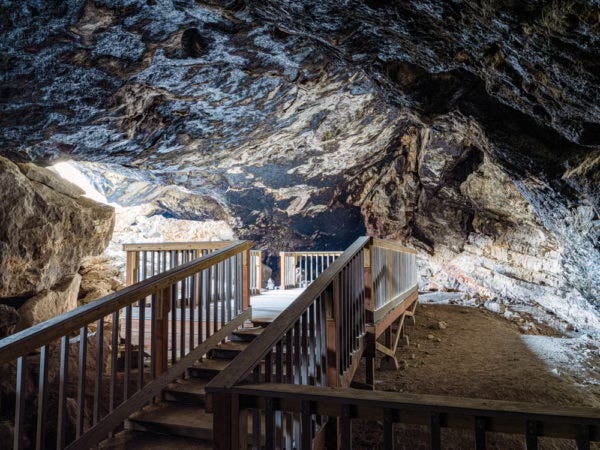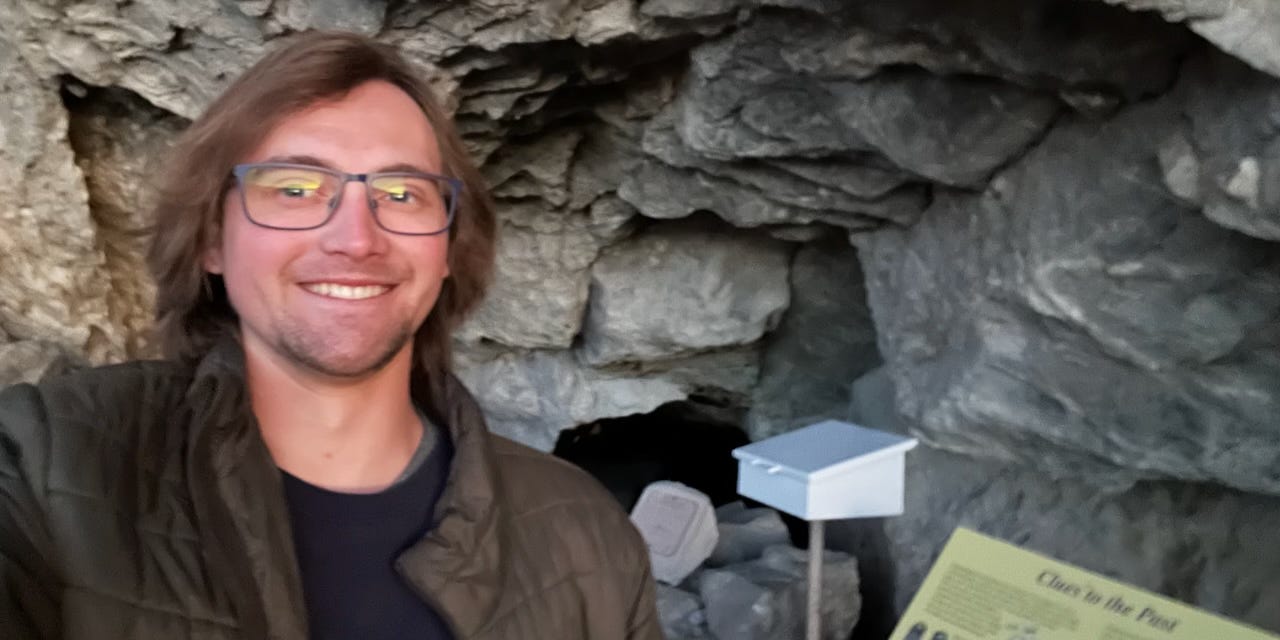Every expert who has published on this place got this fundamental fact wrong.
Whether you've heard of Lovelock Cave in Nevada or not, the most commonly published description about it is wrong.
Happy holiday week to you all — we’re chilling with a bit more relaxed topic today. It’s also a bonus freebie edition to everyone, because yay for holidays. This newsletter separates reality from bullshit in pop culture, and if you find it valuable, please consider becoming a paid subscriber, because I need it! Thanks.
Today I felt like taking a break from drones and RFK and all the crap that’s happening in the world, and thought I would touch on a lovely little unimportant mystery. I hope you will enjoy taking this breather with me.
Lovelock Cave in Nevada is the site of a silly old urban legend of an ancient tribe of red-haired, cannibalistic giants said to have lived in the cave. Wooists have claimed it comes down from a local indigenous legend, but this is almost entirely false. I did a complete Skeptoid episode on it if you’d like the full story — it’s a neat look at early 20th century archaeology and how stories get created.
It is, in fact, an important archaeological site, as it was inhabited by a people called the Lovelock Culture for some 3,000 years, and who left us some 10,000 artifacts. Today, it’s managed by the Bureau of Land Management and you can drive to it and walk inside. It’s worthwhile.
The cave itself is way up on the side of a hill, at the shoreline of the ancient Pleistocene Lake Lahontan, which also covered the Black Rock Desert where today they have Burning Man. The lake dried up by 9,000 years ago, so by the time the Lovelock Culture came along, it was a nice convenient and large shelter… you just had a bit of a hike to get up to it. In 440 BCE, the front overhang of the cave collapsed, taking up a lot of the space inside and making it difficult to access, so the people stopped using it.

Every paper you can find on Lovelock Cave states that it was carved by wave action — an assertion I repeated in my Skeptoid episode, as that’s what is given in every source. This is called a littoral cave, and it’s not uncommon.
But in October 2024, I visited the cave with my son Andrew Dunning MS, a geologist and paleoseismologist in Oregon. He had just finished guiding two geology trips: one for the Geological Society of America, and the first Skeptoid Adventure for Skeptoid Media. So he knows his business.
We weren’t in there for very long before Andrew saw more than enough evidence that this was almost certainly no littoral cave. Once we got further in beyond the collapse, he pointed out substantial calcite deposits — characteristic of limestone karst caves. He suggested that perhaps Lovelock Cave was originally either a karst cave or a simple natural void in the rock which had speleothem formations from its countless millennia of existence. Perhaps the waves of Lake Lahontan broke it open eons ago allowing the early people access, but the cave itself certainly wasn’t formed by waves. It had been a sealed-up cave long enough for these calcite deposits to form.
I want to be clear that Andrew is the first to point out that this is not his specialty and that we were there when it was mostly dark, and he would not want me to put any words in his mouth. So he makes no assertion to any of the above. But I’m not a research scientist and can play faster and looser than he can, so I have no problem putting this out there. He gave pretty knowledgeable descriptions to me of everything he was seeing, and we’ve both been in enough karst caves and littoral caves to tell the difference.
Once we got to our hotel we searched the literature, and even with his geology superpowers we found no geologic papers written on the cave’s origin. Everything we have now about the wave action formation was recorded by archaeologists and anthropologists.
So an opportunity remains for some grad student to do a really neat thesis paper. What is the true origin of Lovelock Cave? Because it ain’t what Wikipedia says.






It sounds like Andrew could get a publishing credit for this if he went after it.
I love your articles which give an actually reasonable description foe overblown and fabulous explanations of real situations. And the scientific and real resources verify that the fantasies do not present the only, or most reasonable, histories. Thank you. Those who prefer to stick with fables are free to, but personally, I prefer, a sensible but fitting scenario.